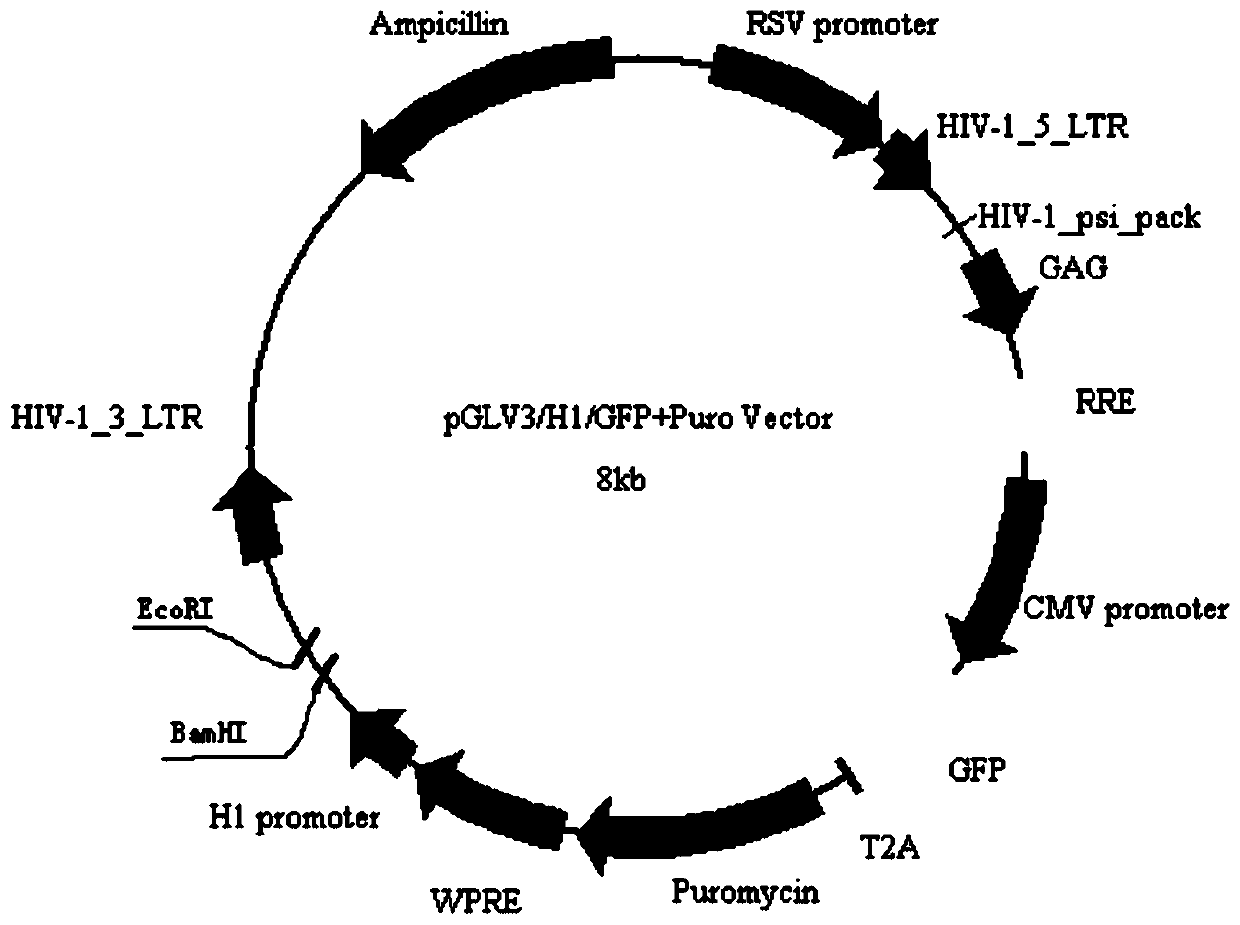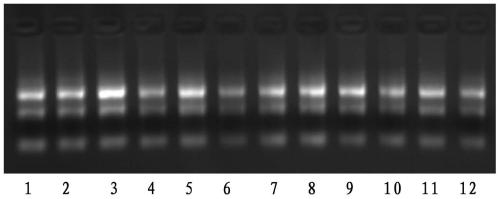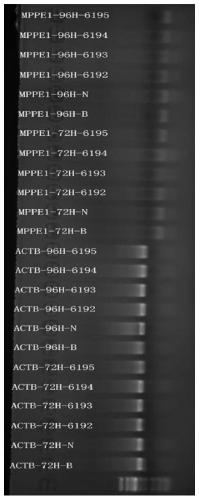A kind of RNAi and its application in the preparation of drugs for treating liver cancer
A technology for drug and tumor treatment, applied in the field of RNAi sequences, can solve the problems of poor efficacy and low effective rate of targeted drugs, and achieve the effect of reducing invasiveness
- Summary
- Abstract
- Description
- Claims
- Application Information
AI Technical Summary
Problems solved by technology
Method used
Image
Examples
Embodiment 1
[0034] Preparation and screening of embodiment 1 RNAi
[0035] 1. Target gene selection and RNAi design
[0036] A total of 4 target sequences to be interfered were selected for the MPPE1 gene, and the information is shown in Table 1.
[0037] Table 1. Four target sequences and one negative control sequence against MPPE1
[0038] Numbering gene name target sequence 6192 MPPE1-homo-1459 GCGTCCCATTCTTTCAGTTGGA 6193 MPPE1-homo-1656 GGTTTGAACTTGCTCGGAAAG 6194 MPPE1-homo-1667 GCTCGGAAAGCGTAAGACAAG 6195 MPPE1-homo-1169 GCTTCCATTATGAGATGAACA 6196 wxya TTCTCCGAACGTGTCACGT
[0039] shNC is the negative control sequence
[0040] 2. Design and synthesize RNAi sequences for the above four target sequences
[0041] DNA oligo was designed using Designer3.0 (Genepharma) software, and DNA oligo was synthesized by conventional gene synthesis technology.
[0042] Design Principles:
[0043] The loop structure in the LV3-shRNA templa...
Embodiment 2
[0141] Example 2 Cell flow cytometry detection of apoptosis caused by RNAi
[0142] 1. Experimental materials and reagents:
[0143] (1) AnnexinV-PE / 7-AAD Apoptosis Detection Kit (KGA1017)
[0144] (2) BD FACS Calibur flow cytometer
[0145] 2. Steps:
[0146] (1) After the cells of each group were subcultured for 48 hours, the cells were digested with EDTA-free trypsin, collected by centrifugation, and the speed of the microcentrifuge was 2000 RPM for 5 minutes, and the culture medium was discarded.
[0147] (2) Wash the cells twice with cold PBS (2000 RPM, centrifuge for 5 minutes to collect the cells).
[0148] (3) Add 5ul of 7-AAD staining solution to 50ul of Binding Buffer and mix well.
[0149] (4) Add the above-mentioned 7-AAD staining solution to the collected cells, mix well; react at room temperature for 15 minutes in the dark.
[0150] (5) After the reaction, add 450ul of Binding Buffer and mix well; add 1ul Annexin V-PE and mix well, and react at room temperat...
Embodiment 3
[0157] Example 3 Application of CCK8 Kit to Detect the Effect of RNAi on Cell Proliferation
[0158] 1. Cells in each group were subcultured overnight, discarded the culture medium, and washed the cells twice with 3ml PBS.
[0159] 2. Add 1ml Trypsin-EDTA solution, mix well, carefully suck off the trypsin solution, and place at 37°C for 3 minutes
[0160] 3. Add 6ml of culture medium containing 10% FBS, and pipette the cells to form a single-cell suspension.
[0161] 4. Count on a hemocytometer and dilute the cells to 5×10 5 cells / ml.
[0162] 5. Press 3×10 3Inoculate the 96-well plate at the concentration of cells / well, and set the zero-adjustment group at the same time, that is, directly add 100 μl DMEM medium to the well, set 5 repetitions for each group, mix well and store in 37°C 5% CO 2 to cultivate.
[0163] 6. At 0, 24, 48, 72, and 96 hours, pour out the culture medium, add 100 μl of fresh medium, add 10 μl of CCK8 to each well in the dark, and incubate in the dar...
PUM
 Login to View More
Login to View More Abstract
Description
Claims
Application Information
 Login to View More
Login to View More - R&D
- Intellectual Property
- Life Sciences
- Materials
- Tech Scout
- Unparalleled Data Quality
- Higher Quality Content
- 60% Fewer Hallucinations
Browse by: Latest US Patents, China's latest patents, Technical Efficacy Thesaurus, Application Domain, Technology Topic, Popular Technical Reports.
© 2025 PatSnap. All rights reserved.Legal|Privacy policy|Modern Slavery Act Transparency Statement|Sitemap|About US| Contact US: help@patsnap.com



